Episodes

Friday May 01, 2020
Friday May 01, 2020
My guest today needs little introduction. Joel Salatin has been one of the most prominent voices in regenerative agriculture for many years now and I thought he’d be the perfect person to not only kick off this new series on regenerative agriculture, but also for his optimistic perspective on the future we are collectively heading into as our countries continue to grapple with the social and economic costs of the COVID-19 pandemic and its response.
Though I had always planned to speak with Joel about the future and opportunities in regenerative farming in the US and around the world, I had no idea just how relevant these topics would be as we find ourselves questioning the future of just about every industry and its environmental impact at this unique moment in history. Though many of us are looking at the bleak predictions for the world economy and all the other looming catastrophes that involve everything from our environment to the food supply system, we are also seeing an unprecedented review of priorities and focus.
In this episode Joel and I discuss how this crisis has affected the farming industry at large but also the incredible impact it’s had on small local farmers. He tells me how he can see this event as a blessing if it’s managed correctly and if we use it as one. Joel also gives details about how his own farm is adapting to the restrictions and finding opportunities to bring his community closer and connect them with other local producers in their area. We also muse over the likely changes that our culture will experience for a long time in the wake of this and what the good and worrisome aspects likely are. In the end though, I left this chat feeling inspired and much more optimistic than I was before and I hope that’s how you feel by the end too.
Resources:
https://www.thelunaticfarmer.com/blog/
https://www.polyfacefarms.com/
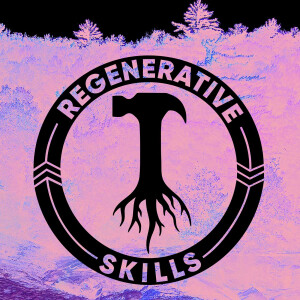
Friday Apr 24, 2020
Friday Apr 24, 2020
Download the free ebook below
Welcome to another special episode! This week we’ll be wrapping up the series on modern homesteading by reviewing some of the most important information from the last 7 interviews.
In those episodes we covered a ton of exciting topics from some of the best authorities in their fields from animal husbandry, becoming self-sufficient by living off your land, myth busting, small enterprise planning, making money on your homestead, and much more.
I’ll also be giving some advice and observations from my own experience living and working on homesteading projects and starting my own homesteads all over the world in the last 15 years.
What’s more is that I’ve just published a new ebook all about homesteading and resilient living titled Homesteading for Every Home that you can download now on the website for free and use to plan your own homestead and start building a profitable land based business right away.
Both in this episode and in the ebook, I’ll be talking about what modern homesteading actually is, how it looks in different living configurations, how you can start taking your first steps towards a homesteading lifestyle, even if you’re living in a tiny apartment in the city, what it means to work towards self sufficiency, ideas for ways to make a living on your homestead, as well as some ideas and advice from my experience homesteading in foreign countries and what the advantages and disadvantages are.
Resources:
What to do and not to do in your first year on a homestead
Good forums for homesteaders
https://www.motherearthnews.com/homesteading-and-livestock/self-reliance/guide-to-urban-homesteading-zm0z14amzrob

Friday Apr 17, 2020
Friday Apr 17, 2020
Today’s guest, NIcholas Burtner, is a permaculture designer, consultant and educator through his organization The School of Permaculture. I caught Nicholas in a good moment for this interview because like many of us he’s in a period of transition with his family in which they are looking to move to a more resilient and independent homesteading lifestyle. Though he’s been gardening and working on self sufficiency projects from his suburban home for years, he and his family are looking to expand to a larger space where they can provide more of their own needs from the land.
In this interview we talk about the thought process behind looking for a good homesteading site and what options the new space could provide. Nicholas talks about the unique context and climate where he lives in Texas and how that influences his options as well.
We also break down the importance of community for resilient living and how investing time and resources at the local level can be one of the most important aspects to urban and suburban homestead living.
In the next couple of weeks I’ll be putting out new content around resilient living during the challenges of this health crisis and techniques and projects you can start from anywhere right away to help prepare yourself and your community for the transition out of this lockdown period and the economic challenges that are likely to affect us all.
Thank you so to you listeners who’ve been writing to me to check in and share ideas and ask questions in the last few weeks. It means the world to me to connect with those of you in the Abundant Edge network and to know that this information is making a difference in your day.
The best part about making this show has always been the connections and relationships that it’s helped to build and I appreciate you all more than ever.
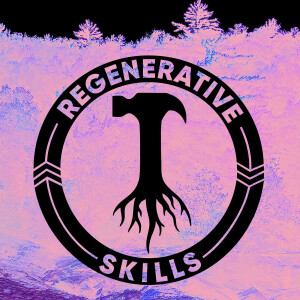
Friday Apr 10, 2020
Friday Apr 10, 2020
My guest today is someone I’ve followed and looked up to since I first began to learn about permaculture and homesteading. Ben Falk is not only a badass homesteader and self-sufficiency pioneer, he’s also an accomplished designer and consultant, primarily through his company Whole Systems Design. For years I’ve even had a video tour of his property in Vermont saved on my computer that I watch from time to time as inspiration for what can be done on a small degraded plot if you take the time to observe the context and patterns of the place and are not afraid to fail in your experiments.
Photo by Jeb Wallace-Brodeur
Ben Falk, founder of Whole Systems Design, holds bundles bundles of short grain brown rice grown in terraced rice paddies at his research farm in Moretown.
Ben is also the author of The Resilient Farm and Homestead, a comprehensive manual for developing durable, beautiful, and highly functional human habitat systems fit to handle an age of rapid transition. With that description I knew Ben would be the right person to speak to about the need for resilient living systems in this time of unprecedented upheaval in our global society.
In this interview, we break down the elements that have to be in place for a system to be considered resilient as well as the essential things that someone has to understand before they can start to interact with their land in a beneficial way. Ben also talks about some of the practical aspects of homestead living such as what he’s found to be the best “bang for your buck” enterprises and time investments which include some surprisingly simple and basic things. We even cover resilience at the community level and dig out some essential advice from Ben’s years working with clients to build their own systems and what considerations people often overlook when they first get started. Though I spoke with Ben before much of the pandemic lockdown had started in the US, this interview has turned out to be very timely for the huge surge in interest all around the world from people looking to reclaim independence from the global economic system and reclaim more self reliance in reaction to seeing how fragile our support systems really are. A renewed interest in everything from growing your own food garden to repairing common household appliances has grown as more people recognize that there is real value in knowing how to provide for your most basic requirements and being able to care for the needs of your community.
In the meantime, I hope all of you are staying safe and healthy in this difficult time of epidemic. My best wishes to all of you and your families.
Resources:
http://www.wholesystemsdesign.com/
https://www.youtube.com/user/wholesystems
https://www.facebook.com/ben.falk.14
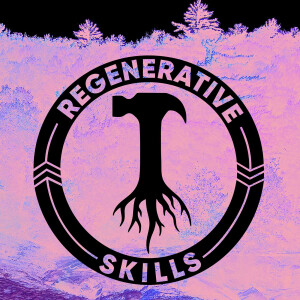
Friday Apr 03, 2020
Friday Apr 03, 2020
In this ongoing series on homesteading I’ve talked to a lot of people who’ve given us really practical information on how to make the transition to a more self-sufficient way of life and connect with nature in the process. We’ve explored how to start businesses on your land, grow and produce your own food, as well as forage for wild food and medicine. In this episode we’ll take a look at the softer side of the homesteading lifestyle in talking about the inner transformations and the feelings connected to rewilding and reconnecting to the land. For this perspective, I spoke to Ayana Young who made a drastic change in a short time from living in downtown Manhattan to living with minimal amenities in the redwood forest in northern California. We explore the motivations behind such a drastic change as well as the inner transformation that can take place during the journey. We also explore the personal sides of managing expectations, mental adjustments to a new environment, and the benefits and drawbacks of living so removed from modern life. Given that I’m normally very focused on the practical, logical and hard science side of ecosystem regeneration and lifestyle transition, it did me a lot of good to take the time to ponder the inner journey that takes place and to consider how others think and feel about the upheavals of these transformations and transitions.
Back when I spoke with Ayana we were not yet in pandemic lockdown here in Spain, but now that we are and now that the quarantine has been extended until at least April 11th, it looks like we here, and many people all around the world are getting a taste of isolated living, even though we may not have moved at all or are only one door away from many neighbors. These drastic transformations are bringing out extreme and unusual feelings in people, myself included, and I’m hearing more and more urgency in developing alternative livelihoods and support systems for ourselves and our communities. I myself was in the process of purchasing a small farm with my partner when everything shut down here in Spain and the process has been suspended indefinitely, but the two of us feel more committed than ever to move to a situation in which we can be of direct help to our community here by providing healthy food and offering learning opportunities to the people around us who are also looking to make a transition. We are living in uncertain and stressful times, but know that you’re not alone in this journey. We will all need to work together and help each other out in the coming transition to a regenerative society. Though I certainly have low moments and doubts these days, I’m also confident that truly good and beautiful examples of human ingenuity and compassion will come out of this pandemic and that our communities will band together in new and inspiring ways to lift us collectively out of this and away from the trajectory of destruction and consumption that we’ve been on before now.
If you’ve been enjoying these episodes I’d encourage you to look through the archives of the Abundant Edge podcast for more inspiration and practical information on everything from natural building for low cost, high quality housing, to growing your own food, planning regenerative farms, and much much more in over 150 episodes. This information and the community connections that it can create are more important and urgent now than ever. Thank you all so much for listening and supporting this show. I hope this finds you all safe, healthy and in good company.
Resources:
https://forthewild.world/
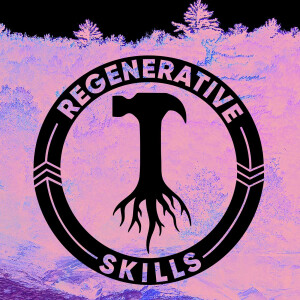
Friday Mar 27, 2020
Friday Mar 27, 2020
Continuing with our ongoing series on homesteading I wanted to talk to someone with a bit more of a similar experience to my own. More than once now I’ve found myself in a new country and starting to build a permaculture inspired, self-sufficient, homestead lifestyle. There are a lot of unique challenges and difficulties when operating in a new place, a different country, or a whole new continent. Zac Barton contacted me a while ago after listening to this podcast to tell me about his own story of settling in a foreign place to pursue the permaculture dream and I felt compelled to share it with you in this episode. Zac first went to visit Nepal back in 2005 on a short volunteering trip and immediately fell in love with the country and the people there. Since then he has worked with a diverse group of projects through the Kamala Foundation which he founded, all based around ecosystem abundance and healthy community building. In this episode we talk about the climate, land and cultural context of Nepal which has fascinated me for a long time. Zac also talks a lot about the challenges he had in getting his homestead and permaculture teaching site off the ground, as well as the influence and impact that it’s had on his surrounding community. Just as importantly he shares the impact and influence that the community has had on him and how it has informed and altered his own goals.
Homesteading in a foreign country is a topic that I really love, not only because I’ve lived it myself a few times, but because every region has its own traditions of working the land and rich knowledge bases to draw from and inform a healthy relationship with the local ecology and communities. If you’re listening to this and have your own foreign permaculture story to share, please tell me about it.
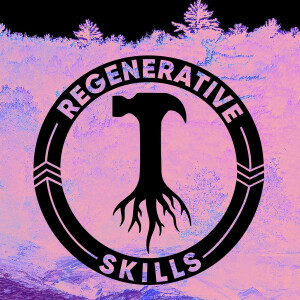
Friday Mar 20, 2020
Friday Mar 20, 2020
In the first half of this interview I spoke with Pam Dawling, the author of “The Year-Round Hoop House'' about the most important information about siting, building, irrigating and soil care for extending crop growing in hoop houses. I tap in to Pam’s extensive knowledge of feeding 100 people in the Twin Oaks Intentional Community in Virginia, mostly from her 30’ by 100’ hoop house and the details of that particular setup.
In the second half of the interview we turn to a topic that so many of you listeners have written to me about, and that’s communal living. These days there’s a renewed interest in ecovillages, intentional communities, and various configurations of communities like that. Many of you who’ve been listening for a while know that I’ve been fascinated by these dynamics and community configurations for a long time too.
Pam gives great insights about her personal motivations for moving to a communal living situation as well as the decision making structure, and many other dynamics that have kept Twin Oaks together since its creation in 1967. Though we recorded this interview a while ago, there’s a lot of relevant information to the current world pandemic situation in that we talk a lot about the resilience and security inherent to land based and semi autonomous living.
I want to also send a quick message of solidarity to all of you around the world who have been affected by the coronavirus outbreak and economic impact of the response. As I’m recording this we’re in the second day of a nationwide quarantine here in Spain where all but essential services and businesses are closed for a two week minimum in order to halt the infection rates. Now more than ever we have an opportunity to rethink the way our communities and lifestyles are configured and how they interact with the environments immediately around us and around the world. In times like these it’s impossible not to see how every part of the planet is connected and how all of our actions, habits, lifestyles and consumption affect everyone else, more directly than ever. To prevent tragedies like this from becoming the new norm we urgently need to restore our damaged environment and work to create earth-wide resilience by regenerating the foundations of our food chains in the form of soil and water resources from which all other life is derived. We must find a way to create societies and cultures based on the care and creation of life in all its forms, not just our own. This unfortunate epidemic can serve as a positive event if it becomes the wake-up-call that inspires massive action on a global scale to completely reinvent the way our economies are structured from those based on resource extraction to those based on resource creation and stewardship. Many of us who have benefitted from the sequestration of wealth from around the world to afford us our comfort and relative abundance, including myself, have the choice to use this privilege to lift other people and other forms of life up, even though it means we compromise our own comfort and ease of living.
On a more personal note, I truly hope that this message finds all of you in good health and in good company. We need each other. We need community. You’re not in this alone. If any of you feel like reaching out through the comments on the website or by email, I would love to hear what you find inspiring and uplifting in these difficult times.
Resources:
https://www.sustainablemarketfarming.com/
https://newsociety.com/books/y/the-year-round-hoophouse
https://newsociety.com/books/s/sustainable-market-farming
https://www.twinoaks.org/
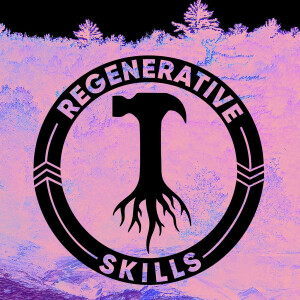
Friday Mar 13, 2020
Friday Mar 13, 2020
Welcome to another episode in this ongoing series on homesteading. In this session I reached out to John Moody, the author of many books including “DIY Sourdough, The Elderberry Book” and the one we’ll be focusing on today “The Frugal Homesteader.”
John is also the founder of Whole Life Services and Whole Life Buying Club and is the former executive director of the Farm-to-Consumer Legal Defense Fund. Like many of the people interviewed in this series, John decided to make a major transition in his lifestyle when he discovered that his diet was literally killing him with duodenal ulcers, seasonal allergies, and other health problems, so he and his growing family began to transition to real local foods and local food distribution and life on a homestead on 35 acres in rural Kentucky. Since then he has become a well-known speaker at conferences, events, and media including Mother Earth News, Wise Traditions, and others.
In this interview we focus on the many creative ideas that he covers in the “The Frugal Homesteader.” More than just a list of tips and tricks, John promotes a mindset of resourcefulness and problem solving that is based on long term thinking and looking at the bigger picture. We cover a lot of real examples from his own experiences in setting up a homestead for the first time and both successes and failures that lead to great solutions.
The best part is that listeners of this show will have the opportunity to win a free copy of John’s book “The Frugal Homesteader.” Here’s how it works, just leave a review of The Abundant Edge Podcast on iTunes and take a screenshot of your review. Send it to info@abundantedge.com along with the address where you’d like to receive your mail and I’ll send the book to the first person I receive an email from. If you live outside of the US or Canada, you can just send the email and we’ll send you a digital copy. If you don’t win this time, don’t worry, I’ll be giving away a ton more books from new society publishers this season so stay tuned each week for your chance to win more books. If you’ve already left a review on iTunes you can share this episode on your prefered social media platform, take a screenshot and send an email just the same. These steps really help us to reach a larger audience with this information and message of actionable steps that anyone can take towards ecological regeneration so I really appreciate you all who’ve been helping me get the word out. I’ll be looking forward to your emails and sending those books out soon.
Resources:
https://johnwmoody.com/
Get your copy of "The Frugal Homesteader"
The Whole Life Buying Club
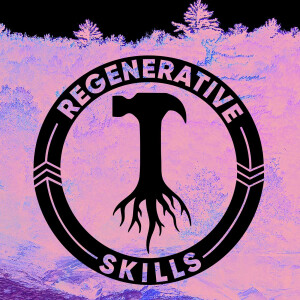
Friday Mar 06, 2020
Friday Mar 06, 2020
Continuing with this ongoing series on homesteading, I reached out to Deborah Niemann, the author of many books including “Homegrown and Handmade, Eco-thrifty, Just Kidding and Raising Goats Naturally” which is now in its second edition. She also blogs at thriftyhomesteader.com, hosts the podcast “For the love of goats' ' and co owns Antiquity Oaks, a small farm in Cornell, Illinois. Like nearly everyone in this interview series, Deborah didn’t grow up on a farm or a homesteading lifestyle at all. Her transition to a healthier and more earth connected way of living lead her to teach others how to care for animals, grow their own food and much more. In this episode I talk to Deborah about just how realistic it is for someone to hope to produce all their own food and how much time it takes her and her husband each week to produce
100 percent of their own meat, eggs, maple syrup, and dairy products, as well as a good portion of your vegetables, fruit, herbs, and honey. We also dissect her book “Homegrown and Handmade to understand some of the most important considerations and plans that she recommends for people looking to get started in a whole range of small farm enterprises like market gardening, small orchards, micro-dairy, meat animals, poultry, fiber and sugar production. This is a really inspiring interview for people who think that you need a whole team, a bunch of machinery or a ton of land to produce an abundance of a wide range of products. Deborah does a great job of breaking things down into manageable steps that you can follow to grow and develop your homestead operations sustainably. The best part is that listeners of this show will have the opportunity to win a free copy of Deborah’s book “Homegrown and Handmade.” Here’s how it works, just leave a review of The Abundant Edge Podcast on iTunes and take a screenshot of your review. Send it to info@abundantedge.com along with the address where you’d like to receive your mail and I’ll send the book to the first person I receive an email from. If you live outside of the US or Canada, you can just send the email and we’ll send you a digital copy. If you don’t wind this time, don’t worry, I’ll be giving away a ton more books from new society publishers this season so stay tuned each week for your chance to win more books. If you’ve already left a review on iTunes you can share this episode on your prefered social media platform, take a screenshot and send an email just the same. These steps really help us to reach a larger audience with this information and message of actionable steps that anyone can take towards ecological regeneration so I really appreciate you all who’ve been helping me get the word out. I’ll be looking forward to your emails and sending those books out soon.
Resources:
Homegrown and Handmade
Raising Goats Naturally
Ecothrifty
Goats Giving Birth
For the Love of Goats Podcast
Antiquity Oaks

Friday Feb 28, 2020
Friday Feb 28, 2020
In the past I’ve done a lot of episodes focusing on specific skills and enterprises that people integrate into a regenerative lifestyle, but in this series I’m going to be speaking with people who’ve put a bunch of those pieces together into a lifestyle centered on positive interactions with nature and a move towards self sustainability.
Homesteading is a general term that originally comes from the homesteading acts in the United States which were a series of laws enacted between 1862 up until the 1930s which allowed an applicant to acquire ownership of government land or otherwise public land for free or very cheap if they lived on and farmed that land for a set period of time. Canada and Australia also had similar policies in their past to promote expansion and settlement of their large countries when they were newly colonized. These days, since the acts have long since expired, homesteading has come to mean a lifestyle of self sufficiency and is more characterized by subsistence farming, back-to-the-land movements and small scale home economics. Different areas around the world have different names for this concept, for example a smallholding or a croft in the UK are fairly synonymous with a homestead.
Given the rise in popularity of homesteading and people wanting to reconnect with nature and learn to work more intimately with the land to produce their needs and livelihood, I wanted to create a series that helps people who are aspiring to this kind of lifestyle prepare themselves for the dramatic changes and the many wonderful options available to them. Homesteading isn’t just one thing. Far from it in fact. The people interviewed in this series will explain how they made the transition from a more conventional and dependent life, to one of more autonomy. They’ll explain the struggles, lessons, victories and failures that got them to where they are and what advice they would give to others starting out. So especially for those of you who dream of making a big lifestyle change, this series is for you.
Now let’s jump into the first interview in this series. Many of the people I know who’ve made a big change in their life towards self sufficient living in nature were inspired to do so after a major wake-up call event, and Natalie Bogwalker was no different. After a serious bike accident caused her to re-evaluate her life choices she decided to go “all-in” and went to live primitively in the woods at the Wild Roots community in North Carolina. After years of immersion and learning in that lifestyle, she became motivated to share her knowledge with more people and create a larger community movement.
In this interview Natalie talks about her journey of making such a drastic change early on in her life, what she learned from the experience and how it has informed the way she lives and teaches on her homestead now. She breaks down a lot of the routines and time investments on the different operations of her place and how the dynamics of having different operations like the classes and workshops, apprenticeship programs and other community connections affect everyday life. Some of my favorite moments are from Natalie’s observations from experience living very primitively to the more modern and connected way she lives now and her recommendations for people weighing their options and considering a move to one of these lifestyles. She also gives great practical information on wild plant resources as food and medicine and much more. Like every interview in this series, Natalie’s setup and lifestyle represent a few of the millions of options out there for how to plan, build, and run a homestead and it’s meant to give you ideas and pragmatic insights from people who are doing and living this every day
Resources:
WildAbundance.net
Wild Abundance Permaculture Classes
Wild Abundance Blog









